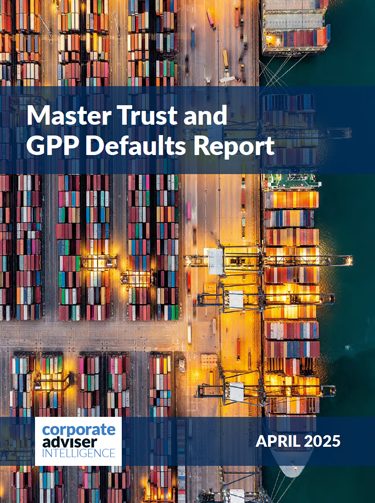The government should embrace bold pension reforms as a radical game-change for UK growth.
Given the high cost of tax relief there is clear justification for the government to require pension funds to invest money into the UK, rather than allocating most of their money overseas and helping boost other countries’ economies.
The cost of this tax relief is over £70bn a year (from income tax relief and NI exemptions). And given that at least 25 per cent of each pension fund originates from tax reliefs and 25 per cent can be taken tax free, the government should require at least 25 per cent of all new pension contributions to invest in UK markets as the quid pro quo.
This is incentivisation rather than mandation. If trustees or managers don’t want the tax reliefs, they can invest 100 per cent overseas, it is their choice.
This reform would not cost the Government more money and could help revive our financial markets, as well as boosting growth.
These UK investments should encompass quoted larger or smaller businesses, as well as unlisted or early-stage companies, infrastructure and housing. I am talking about starting a re-rating of UK assets, which have become conspicuously undervalued in recent years. This could be a win-win for the country, both short and long term, setting up a virtuous circle to replace the doom loops of falling pension allocations and UK markets’ underperformance.
It is time for revolution, not evolution, with more money being used at home, rather than leaking overseas. Britain’s productivity and technology funding have fallen behind other countries and the once-robust domestic institutional asset base that supported UK companies and markets has eroded. This is threatening our country’s position as a global financial centre that punches well above its weight. Such pension reform can help increase national wealth to fund public services and sustainable growth.
The main drivers of the decline in UK allocations have been the de-risking of private sector DB schemes and the shift across UK pensions to lower cost passive global market-weighted equity allocations.
By slashing their exposure to UK public company shares, domestic pension funds have gone from being a natural support for the London stock markets, to an insignificant force. By dramatically cutting exposure to equities and other risk assets, UK pension funds are giving up on higher expected returns. In any capitalist system, one of the bases of capital asset pricing is that higher risk assets will, on average, deliver higher returns over time. Other countries’ pension funds have moved away from extreme reliance on fixed income assets, to embrace investment risk. But UK pensions have reversed their past over-weighting in equities.
Nowadays, UK pension funds have significantly lower absolute and relative allocations to domestic equities and unlisted equities than most global developed country pension systems. In international comparisons, this is a huge vote of ‘no confidence’ in Britain. Each part of the UK pension system has a lower allocation to domestic equities as a percentage of total assets, as a proportion of total equity allocation and relative to the size of the local stock market.
Is it reasonable to expect to attract overseas investors to invest in this country, if our own institutions do not believe in our markets? UK corporate DB schemes – which hold the vast majority of current pension assets, typically allocate just 1.4 per cent to UK equities. Public sector DB schemes and DC are somewhat higher, but still well below the global norm.
The switch of UK pension assets out of UK equities has fundamentally weakened the London Stock Market, with declining demand, lower trading volumes, less dynamism and a substantial fall in the number of publicly traded companies relative to GDP. This has resulted in a substantial de-rating of the UK relative to other global markets, and lower valuations have increased the cost of funding for UK firms.
Reversing this underweighting in pension fund UK exposure can help rebuild confidence in UK assets and markets more generally. This, in itself, could help boost growth, without additional Government expenditure.
The UK position as an international outlier is highlighted in the tables below.
Table: How countries invest in their own domestic markets
| Country | Domestic Equity | MSCI weight | Relative |
| Australia | 37.7 | 1.3 | 2800% |
| Italy | 41.0 | 0.6 | 6733% |
| Japan | 49.4 | 4.4 | 1023% |
| France | 26.0 | 2.7 | 863% |
| USA | 63.5 | 43.2 | 47% |
| UK | 2.8 | 4.5 | -38% |
Table: Asset allocation of international major pension funds:
| Country and pension scheme | Allocation to domestic equity | MSCI – % weight in index | Relative weight |
| Japan – Government Pension Investment | 49.8 | 4.4 | 1026% |
| Japan – National Federation of Mutual Aid | 49.2 | 4.4 | 1012% |
| France – ERAFP | 35.0 | 2.7 | 1226% |
| France – FRR | 17.0 | 2.7 | 552% |
| Australia – Australian Super | 45.2 | 1.3 | 3303% |
| Australia – Future Fund | 28.9 | 1.3 | 2074% |
| Australia – Aware Super | 39.0 | 1.3 | 2836% |
| Canada – Public Service Pension Plan | 8.9 | 3.2 | 178% |
| Canada OMERS1 | 13.7 | 3.2 | 326% |
| Canada – HOOPP | 10.8 | 3.2 | 237% |
| US – Calpers | 60.1 | 43.2 | 439% |
| US – New York State Common | 68.9 | 43.2 | 59% |
| US – New York City Retirement | 61.4 | 43.2 | 42% |
| UK – USS (*figures related to listed investments) | 2.2 | 4.5 | -51% |
| UK – Railways Pensions (Railpen) | 3.3 | 4.5 | -25% |
| UK – HSBC | 2.5 | 4.5 | -43% |
| UK – Parliamentary Pension Fund (PCPF) | 1.7 | 4.5 | -62% |
In conclusion, reforming pension tax relief rules could be a new dawn for British markets and growth, heralding a return of reliable domestic institutional support for our own economy, after years of taxpayers spending billions to boost overseas markets rather than our own.
This proposal would require 25 per cent of all new pension contributions – so the new flow would be invested here, but the existing stock of assets is not part of the reform – to be allocated to UK assets, such as equities, real estate, infrastructure or small and unlisted companies, as a condition of receiving the Government contribution to pensions.
Sadly, many in the pensions industry, as well as multi-national and passive fund management houses, are lobbying to insist that pension funds must be free to keep underweighting the UK and should not be incentivised in this way to increase their UK exposure. They suggest this undermines the fiduciary duty to obtain best member returns and that past performance does not justify such overweighting. However, introducing a quid pro quo of tax reliefs changes the whole equation. Most trustees or individuals would realise that the generous reliefs are likely to more than outweigh any expected UK underperformance over time. And as other countries are already doing this, it can hardly be called ‘protectionism’. Such reform would slowly increase UK pension fund exposure, help drive a re-rating of all UK assets and start to attract long-term investment capital from other overseas or domestic investors who currently underweight the UK due to past performance. This would drive down the cost of funding – with a consequential improvement in growth.





